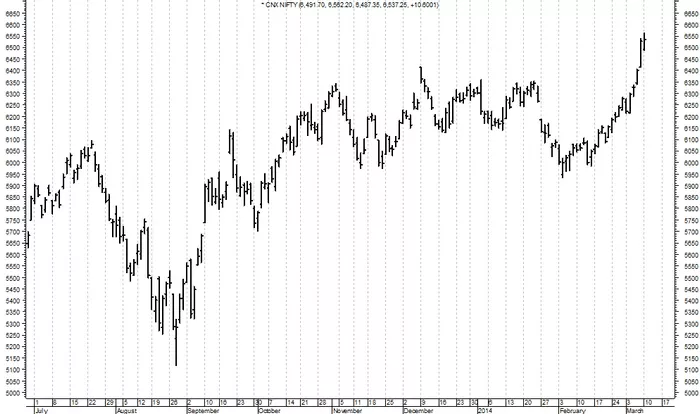Investing in low price stocks can be a profitable strategy for both seasoned and novice investors. However, the challenge lies in identifying these stocks and making informed decisions that align with your financial goals. This article will guide you through 6 effective methods to buy low price stocks, ensuring that you make well-informed investment choices. Each method is designed to help you navigate the complexities of the stock market with confidence and precision.
1. Understand Market Cycles
a. Recognize Bull and Bear Markets
Understanding market cycles is crucial for identifying opportunities to buy low price stocks. The stock market typically moves in cycles, characterized by periods of growth (bull markets) and decline (bear markets). In a bear market, stock prices often fall, providing opportunities to buy shares at lower prices. Recognizing these cycles allows you to time your purchases strategically.
b. Learn to Identify Market Bottoms
A market bottom is the point at which a stock or market as a whole stops falling and begins to rise. Identifying a market bottom can be challenging, but it is a key moment to buy low. Look for signs of market stabilization, such as reduced volatility, increased trading volume, and positive economic indicators. Being patient and waiting for the market to bottom out can lead to more favorable buying opportunities.
2. Utilize Dollar-Cost Averaging
a. What is Dollar-Cost Averaging?
Dollar-cost averaging (DCA) is an investment strategy where you invest a fixed amount of money at regular intervals, regardless of the stock’s price. This approach helps to mitigate the impact of market volatility by spreading your investment over time. By purchasing shares at different prices, you reduce the risk of buying all your shares at a market high.
b. Benefits of Dollar-Cost Averaging
DCA can be particularly effective when buying low price stocks. It allows you to accumulate more shares when prices are low and fewer shares when prices are high, potentially lowering your average cost per share. Additionally, DCA helps remove the emotional aspect of investing, as you stick to a consistent investment plan regardless of market fluctuations.
See Also: 7 Stocks to Buy When Interest Rates Are Rising
3. Look for Undervalued Stocks
a. Understanding Stock Valuation
Stock valuation is the process of determining the intrinsic value of a company’s stock. An undervalued stock is one that is trading below its intrinsic value, often due to temporary factors such as market sentiment or economic conditions. Identifying undervalued stocks requires a thorough analysis of a company’s financials, including its earnings, revenue, and growth potential.
b. Using Valuation Ratios
Valuation ratios, such as the price-to-earnings (P/E) ratio, price-to-book (P/B) ratio, and price-to-sales (P/S) ratio, are essential tools for identifying undervalued stocks. For example, a low P/E ratio may indicate that a stock is undervalued relative to its earnings. Comparing these ratios to industry averages and historical data can help you spot stocks that are priced lower than their true value.
4. Invest in Small-Cap and Micro-Cap Stocks
a. What are Small-Cap and Micro-Cap Stocks?
Small-cap and micro-cap stocks refer to companies with relatively small market capitalizations, typically under $2 billion and $300 million, respectively. These stocks are often less well-known and less widely covered by analysts, which can lead to pricing inefficiencies. As a result, small-cap and micro-cap stocks can present opportunities to buy at lower prices.
b. Risks and Rewards
Investing in small-cap and micro-cap stocks carries higher risk compared to large-cap stocks. These companies may have less established business models, lower liquidity, and higher volatility. However, they also have the potential for significant growth, making them attractive to investors seeking high returns. Careful research and diversification can help manage the risks associated with these stocks.
5. Monitor Insider Trading Activity
a. What is Insider Trading?
Insider trading refers to the buying or selling of a company’s stock by individuals with access to non-public, material information about the company. While illegal insider trading is prohibited, legal insider trading occurs when corporate executives, directors, and employees buy or sell stock in their own companies and report these transactions to regulatory authorities.
b. Why Monitor Insider Trading?
Monitoring legal insider trading activity can provide valuable insights into a company’s prospects. When insiders buy shares of their own company, it may indicate that they believe the stock is undervalued and has potential for future growth. Conversely, heavy selling by insiders could be a red flag. Tracking insider buying trends can help you identify low price stocks with strong future potential.
6. Use Technical Analysis
a. Understanding Technical Analysis
Technical analysis involves studying historical price movements and trading volumes to predict future stock price trends. Unlike fundamental analysis, which focuses on a company’s financial health, technical analysis relies on charts and patterns to identify buying opportunities. This method can be particularly useful for timing your entry into low price stocks.
b. Key Technical Indicators
Several technical indicators can help you spot low price stocks that are poised for an upward move. Some popular indicators include:
Moving Averages: These smooth out price data to identify trends over time. A stock trading below its moving average might be undervalued.
Relative Strength Index (RSI): RSI measures the speed and change of price movements. A low RSI (typically below 30) suggests that a stock is oversold and may be due for a price increase.
Support and Resistance Levels: These are price points where a stock tends to find support as it falls or resistance as it rises. Buying near support levels can be a strategy to purchase at a lower price.
Conclusion
Buying low price stocks requires a blend of knowledge, strategy, and patience. By understanding market cycles, utilizing dollar-cost averaging, identifying undervalued stocks, exploring small-cap and micro-cap opportunities, monitoring insider trading, and applying technical analysis, you can enhance your ability to make informed investment decisions. Remember, while low price stocks can offer significant upside potential, they also come with risks. Diversifying your portfolio and conducting thorough research are key to minimizing those risks and maximizing your returns. As you apply these six methods, you’ll be better equipped to navigate the complexities of the stock market and seize opportunities to buy low and build wealth over time.
Related topics:





























